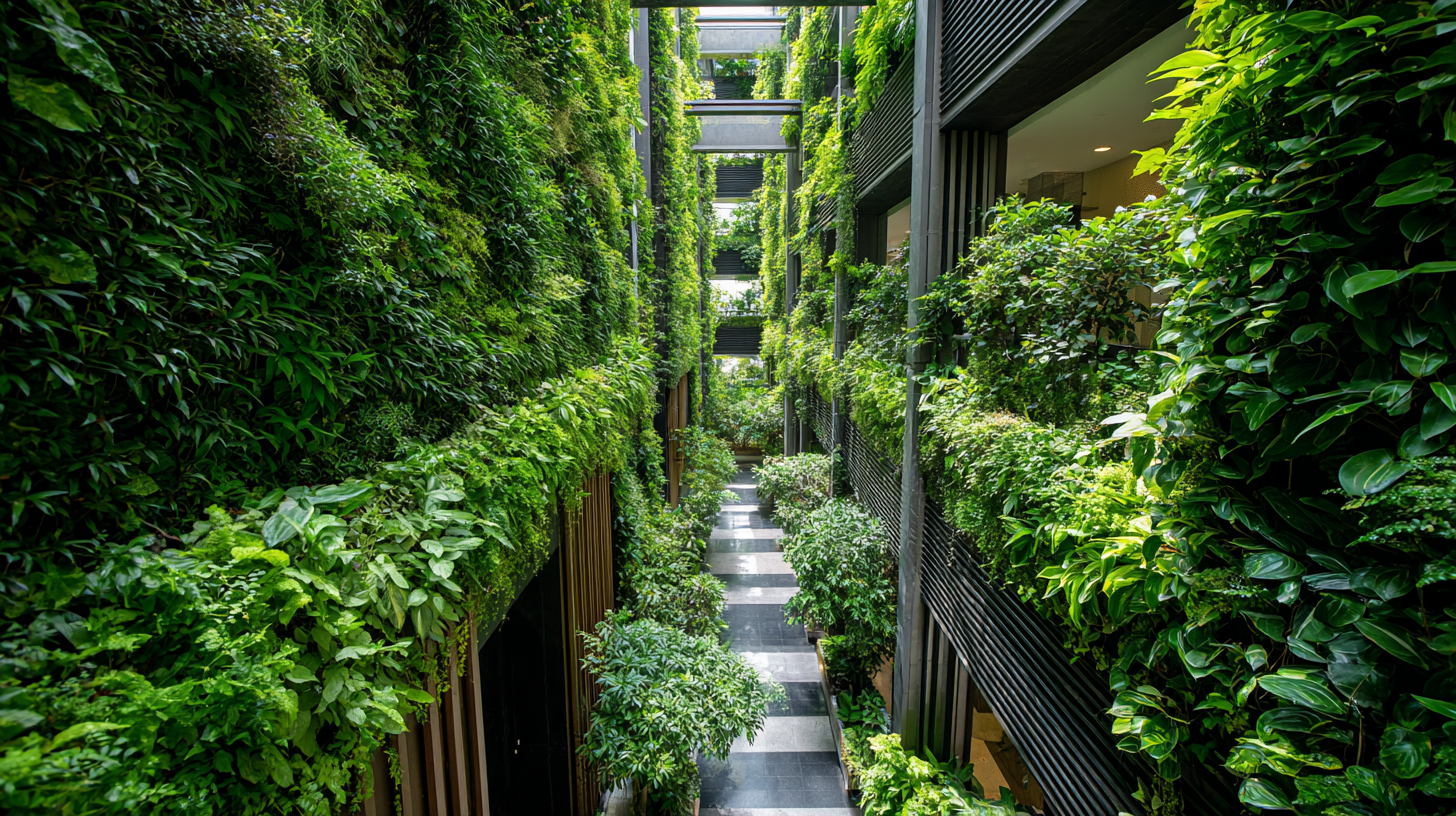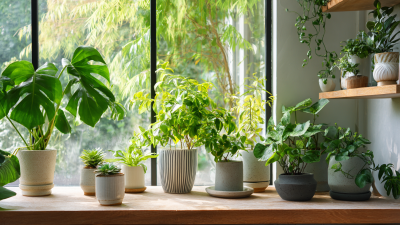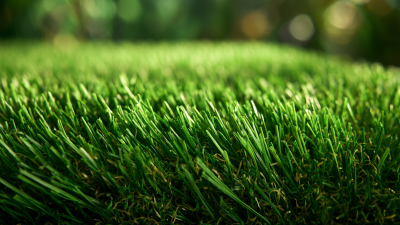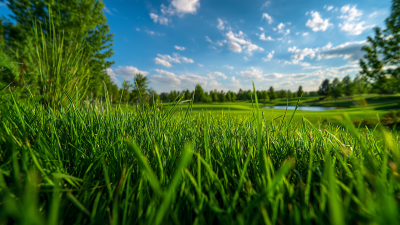As urbanization accelerates globally, green infrastructure becomes increasingly essential for enhancing urban living and supporting biodiversity. One of the most innovative solutions in this realm is the Garden Green Wall, which not only enhances the aesthetic appeal of urban spaces but also offers numerous environmental benefits. According to a report by the World Health Organization, urban green spaces can reduce temperatures and mitigate the urban heat island effect, leading to improved public health outcomes. Furthermore, the benefits of green walls extend beyond aesthetics; they can improve air quality by filtering pollutants and sequestering carbon, making cities healthier places to live.

Studies have indicated that incorporating Garden Green Walls into urban environments can significantly increase biodiversity. The Green Roofs for Healthy Cities report highlights that these vertical gardens provide habitat for various species, including birds, insects, and plants, which are crucial for maintaining ecosystem balance in densely populated areas. Additionally, research from the University of Melbourne shows that urban greenery can enhance physical and mental well-being, contributing to lower stress levels among residents. As cities continue to grow, the implementation of Garden Green Walls presents a viable pathway towards a more sustainable and biodiverse urban future.
Green walls represent an innovative approach to enhancing urban living and biodiversity, particularly through their significant impact on urban microclimates and temperature regulation. By incorporating vegetation into building façades, these living walls can effectively insulate structures, leading to reduced energy consumption for heating and cooling. This not only mitigates the urban heat island effect but also helps in lowering ambient temperatures in densely populated areas, ultimately creating more comfortable living environments.
As cities grapple with rising temperatures and climate challenges, the strategic implementation of green walls can provide tangible benefits. For instance, they improve air quality by filtering pollutants and increasing humidity, which can be particularly helpful in combating the harsh effects of air pollution. Moreover, green walls contribute to biodiversity by creating habitats for various species, promoting ecological balance in urban settings.
**Tips for Implementing Green Walls:**
1. **Choose the Right Plants:** Select native and drought-resistant plant species to ensure sustainability and reduce maintenance needs.
2. **Consider Structural Support:** Ensure that the building’s structure can support the added weight of the green wall, and integrate appropriate irrigation systems for plant health.
3. **Engage the Community:** Encourage community involvement in the planning and maintenance of green walls to foster a sense of ownership and respect for local biodiversity.
| Benefit | Description | Impact on Urban Microclimates | Temperature Regulation Effect |
|---|---|---|---|
| Air Quality Improvement | Plants filter pollutants and carbon dioxide. | Reduces airborne particulates and increases oxygen levels. | Moderates temperature by reducing heat accumulation. |
| Biodiversity Enhancement | Provides habitat for various species. | Encourages urban wildlife and promotes ecological balance. | Supports cooler microhabitats for species. |
| Energy Efficiency | Insulates buildings, reducing heating and cooling costs. | Lowers urban heat island effect. | Contributes to more stable indoor temperatures. |
| Stormwater Management | Absorbs rainwater, reducing runoff. | Mitigates flood risks in urban areas. | Prevents soil erosion and maintains water balance. |
| Aesthetic Appeal | Enhances beauty of urban spaces. | Promotes well-being and recreation in green spaces. | Encourages outdoor activity and community interaction. |
Vertical gardens, often referred to as green walls, play a pivotal role in enhancing urban biodiversity. By incorporating plants into the vertical surfaces of buildings, these green installations create vital habitats for various urban wildlife species. Birds, insects, and even small mammals can find refuge and food sources within these lush structures. The diversity of plant species used in vertical gardens attracts different types of fauna, promoting a thriving ecosystem in otherwise concrete-dominated urban landscapes.
Moreover, vertical gardens contribute to improved air quality and temperature regulation, which are crucial for the survival of urban wildlife. As plants absorb carbon dioxide and release oxygen, they create a healthier environment for both humans and animals. The moisture released from the plants can also help regulate humidity levels in the surrounding area, providing a more suitable microclimate for various species. By integrating these green walls into our cities, we not only beautify our surroundings but also foster a more resilient and biodiverse urban ecosystem.
This chart illustrates the estimated increase in urban biodiversity supported by garden green walls over a five-year period. The data reflects the number of different wildlife species observed in urban areas with and without vertical gardens.
Green walls are transforming urban landscapes by introducing vibrant greenery amid the often monotonous concrete structures. These vertical gardens breathe life into city environments, providing a visual feast that enhances aesthetic appeal. As urban areas expand, the importance of integrating greenery into architecture becomes increasingly evident. The visual impact of green walls not only beautifies surroundings but also creates an inviting atmosphere that fosters community interaction and well-being.

Moreover, the economic survey underscores that these green installations serve a dual purpose; they improve thermal performance and contribute to enhanced air quality by sequestering carbon. The lushness of vertical gardens acts as a natural filter, capturing pollutants and releasing oxygen, thus contributing significantly to urban biodiversity. As the popularity of green walls grows, they signify a shift towards more environmentally conscious urban planning, where aesthetics and ecological benefits go hand in hand, fostering a healthier living environment for city dwellers.
 Garden green walls, often referred to as living walls, serve not only as aesthetic enhancements to urban environments but also promise significant health benefits for city dwellers. According to a report from the World Health Organization, urban greenery can reduce respiratory issues by up to 30% by improving air quality. By filtering harmful pollutants and producing oxygen, green walls contribute to healthier living conditions, thereby enhancing the well-being of residents in densely populated areas.
Garden green walls, often referred to as living walls, serve not only as aesthetic enhancements to urban environments but also promise significant health benefits for city dwellers. According to a report from the World Health Organization, urban greenery can reduce respiratory issues by up to 30% by improving air quality. By filtering harmful pollutants and producing oxygen, green walls contribute to healthier living conditions, thereby enhancing the well-being of residents in densely populated areas.
Furthermore, the presence of greenery in urban settings has been linked to reduced stress levels and improved mental health. A study published in the Journal of Environmental Psychology found that individuals living near natural landscapes or green installations reported lower levels of anxiety and increased feelings of tranquility. Additionally, the presence of garden green walls can foster community interaction and cohesion, as studies indicate that green spaces promote social engagement among neighbors. Consequently, these living walls not only contribute to biodiversity but also cultivate healthier, happier communities in urban landscapes.
Innovative technologies in garden green wall design are revolutionizing sustainable urban living. These structures integrate advanced materials and techniques, such as modular plant systems and hydroponic watering systems, that not only enhance the aesthetic appeal of urban areas but also optimize plant health and growth. By utilizing lightweight substrates and efficient irrigation systems, green walls can thrive in the limited space typical of city environments, promoting greenery without demanding extensive ground area. This innovation encourages urban residents to reconnect with nature while combating the challenges posed by urbanization.
Moreover, smart technology is increasingly being incorporated into green wall systems, enabling real-time monitoring of plant conditions, moisture levels, and even environmental impacts. Sensors can help gardeners adjust conditions for optimal plant health, ensuring sustainability and minimizing resource waste. The combination of these technologies not only contributes to biodiversity by offering habitats for urban wildlife but also helps mitigate urban heat effects and improve air quality. As cities continue to grow, the adoption of such innovative designs represents a crucial step toward fostering a more sustainable and environmentally friendly urban lifestyle.












